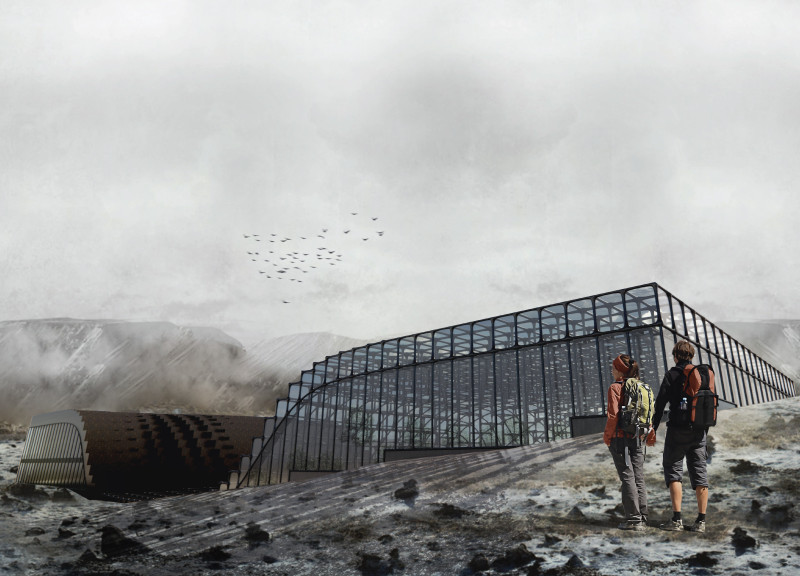5 key facts about this project
The greenhouse restaurant located near the Mývatn Nature Bath in Iceland features a design that merges with the natural landscape. Its setting highlights the beauty of the surrounding environment while fulfilling the function of a dining space and an educational facility. The approach emphasizes sustainability and encourages visitors to connect with nature, particularly through fresh, locally sourced produce.
Architecture Concept
The design carefully guides visitors from the welcoming entrance, characterized by warm wooden interiors, into a vibrant green valley. A step garden descends toward an expansive field, allowing guests to interact directly with the plants. They can pick fruits and vegetables, which are then used in meals served at the restaurant. This hands-on experience fosters a connection between patrons and the ingredients, reinforcing the idea of farm-to-table dining.
Spatial Experience
A lounge area positioned in front of the kitchen enhances the overall experience, allowing guests to watch the preparation of their food. This visibility creates a relationship that ties diners to the ingredients, emphasizing the importance of where food comes from. Visitors ascend a circular staircase to reach the dining area on the second floor. Here, they enjoy sweeping views of the nature bath and the surrounding Icelandic landscape. This design element establishes a strong bond between the indoor space and the outdoor environment.
Sustainability Initiatives
Sustainability plays a key role in the design. The restaurant incorporates a greenhouse water system and uses energy-efficient temperature controls powered by renewable sources. Part of the building is embedded underground, which provides insulation necessary for the local climate. This configuration reduces energy needs and minimizes the building's impact on the landscape, allowing it to blend harmoniously with the natural topography.
Material and Form
The form of the restaurant is influenced by the mountain contours, reflecting a sensitivity to its surroundings. While specific materials are not elaborated in the presentation, the warm wooden interiors suggest a focus on creating a comfortable and inviting atmosphere. The structure’s design not only serves practical purposes but also complements the environmental context, reinforcing the connection between the building and the earth.






















































